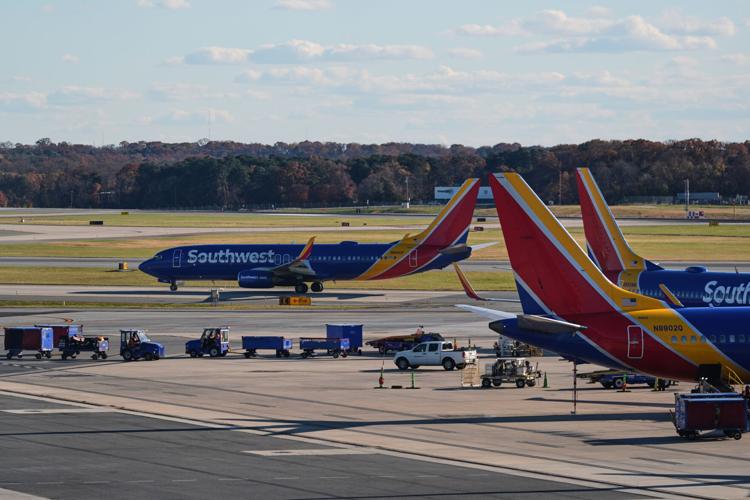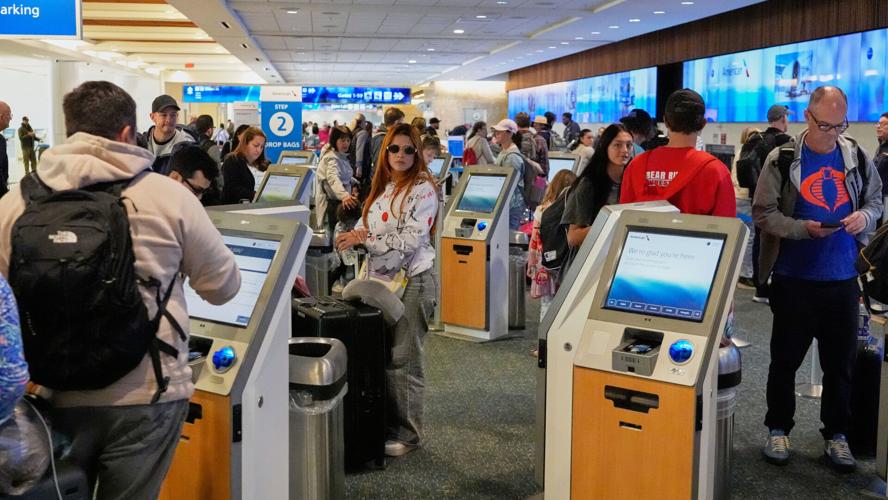Air travelers faced more frustration as busy U.S. airports tried to meet a higher Federal Aviation Administration target for reducing flights Tuesday after already canceling thousands to scale back demands on the nation's aviation system during the government shutdown.
Absences and signs of stress among traffic controllers, who haven't been paid in more than a month, made it imperative to cut flights in the name of public safety, the FAA said, ordering domestic airlines last week to drop 4% of their flights at 40 major U.S. airports. After already canceling more than 7,900 since Friday, the goal for cutting flights rose to 6% on Tuesday and again to 10% on Friday.
About 1,200 flights were canceled Tuesday, according to FlightAware, a website that tracks air travel disruptions. It was unclear exactly how many additional flights would need to be canceled for the day, but there are fewer flights scheduled on Tuesdays and Wednesdays. Severe weather added to the cancellations at some airports.
People are also reading…

Cancelled flights into Tampa International Airport are shown Tuesday┬Āon the arrivals board in Tampa, Fla.
The average cancellation rate over the last few days already exceeded the FAA's requirement, according to aviation analytics company Cirium. The FAA also expanded its flight restrictions Monday, barring business jets and many private flights from using a dozen airports already under commercial flight limits.
However, controller shortages continued to lead to flight delays, including one of about five hours for arriving flights Monday evening at Chicago O'Hare International Airport, where wintry weather added to staffing-related disruptions earlier in the day.
The FAA warned that staffing at over a dozen towers and control centers could delay planes departing for Phoenix, San Diego, the New York area and Houston, among other cities.
Freezing weather in parts of the country on Tuesday could cause further delays and cancellations.

A Southwest Airlines plane taxis down the runway Monday┬Āas others sit at gates at Baltimore/Washington International Thurgood Marshall Airport.┬Ā
The Senate passed legislation Monday to reopen the government. But the 41-day shutdown could last a few more days as members of the House, kept on recess since mid-September, return to Washington to vote on the legislation.
The final Senate vote, 60-40, broke a grueling stalemate that lasted more than six weeks as Democrats demanded that Republicans negotiate with them to extend health care tax credits that expire Jan. 1.
The Republicans never did, and just enough moderate Democrats eventually switched their votes as federal food aid was delayed, airport delays worsened and hundreds of thousands of federal workers continued to go unpaid.
Transportation Secretary Sean Duffy made clear last week that flight cuts will remain until the FAA sees safety metrics improve after staffing levels stabilize at its air traffic control facilities.
Many planes also aren't where they're supposed to be, which could slow the airlines' return to normal operations even after the FAA lifts the order, said Mike Taylor, who leads research on airports and airlines at J.D. Power.
The FAA came under criticism after its original order only applied to a very small subsection of private planes. But some want to see even more done.

Passengers check in Tuesday┬Āat the American Airlines counter at Orlando International Airport in Orlando, Fla.┬Ā
Patriotic Millionaires, a group of wealthy Americans pushing for more progressive taxes, called for all private jets to be grounded during the shutdown.
"Rich people are taking their joyrides while average Americans don't make it to grandma's bedside in time," said Erica Payne, its founder and president.
She said none of its members that still fly private have reported cancellations or delays since the FAA's order took effect.
Tuesday marks the second missed payday for controllers. Some started calling out of work, citing stress and the need to take on second jobs.
It's unclear how quickly controllers might be paid once the shutdown ends ŌĆö it took more than two months to receive full back pay after the 35-day shutdown that ended in 2019, said Nick Daniels, president of the National Air Traffic Controllers Association.
President Donald Trump took to social media on Monday to pressure controllers to "get back to work, NOW!!!" He called for a $10,000 bonus for those who've stayed on the job and suggested docking pay for those who haven't.
Daniels said the shutdown made controllers' demanding jobs even more stressful, leading to fatigue and increased risks. He said the number who are retiring or quitting is "growing" by the day.








